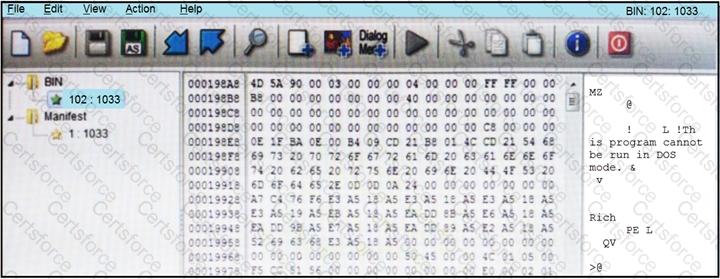The file in question indicates a DOS MZ executable format. The MZ signature at the beginning of the file (as seen in the hexadecimal representation) is characteristic of an executable file format for DOS. This signature, combined with the text “This program cannot be run in DOS mode,” which is typically included as a message in DOS MZ executables to be displayed when they are run in a non-DOS environment, confirms that the file is a DOS MZ executable.
While this format can be used for Windows executables as well (as they may start with a DOS MZ header for backward compatibility), the presence of the MZ header is a clear indicator of the DOS MZ executable format. The other options, such as an MS-DOS executable archive or archived malware, are less specific and do not directly relate to the evidence presented in the file’s resources. A Windows executable file would also have a DOS MZ header, but thequestion specifically asks about the indication from examining the file’s resources, which points to the DOS MZ format. Therefore, the most accurate answer is A. a DOS MZ executable format.
[Reference: https://stackoverflow.com/QUESTION NO:s/2577545/why-is-this-program-cannot-be-run-in-dos-mode- text-present-in-dll-files#:~:text=The%20linker%20places%20a%20default,using%20the%20%2FSTUB% 20linker%20option.&text=This%20information%20enables%20Windows%20to,has%20an%20MS-DOS% 20stub., ]

Submit